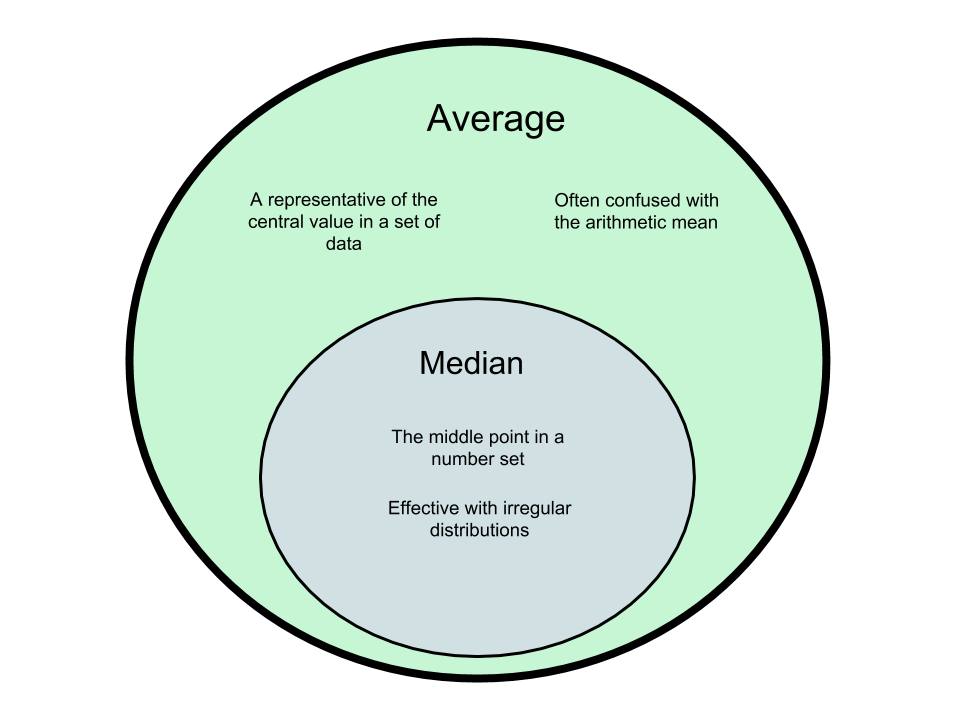Difference between Median and Average
Median and average are both mathematical terms learned in mathematics alongside the mean and the mode. All of these terms can be quite confusing. In this article, we will concentrate on differentiating between the median and average.
The median refers to the middle point of a number set. A number set is simply a collection of numbers. When trying to find the median in a number set, you naturally want to go to the middle. For example, you have a number set composed of 1, 3, 7, 11, and 23. The number in the middle of the five numbers is the third - 7. In this case, 7 is the median of the set. In the case that there is an even amount of numbers in a set, you simply add the two numbers in the middle and divide them by two. For example, if the number set had an additional number like 34 at the end, then the middle numbers would be both 7 and 11. Adding these two together and dividing them by two equals 18. In this case, 18 would be the median.
On the other hand, the average is a number representing the central value in a set of data. While the average is most likely attributed to the arithmetic mean (the sum of numbers divided by the amount of numbers in the set), the median is also a type of average. When someone asks you to give the average of a set of numbers, they are most likely referring to the mean. However, that doesn’t change the fact that the median and the mode are also types of average.
| Median | Average | |
|---|---|---|
| Definition | The middle point of a number set | A representative of the central value in a set of data; often mistaken to be synonymous to the arithmetic mean |
| Application | Irregular distributions, especially when there are numerous variables (.e.g. Median salary) | Regular distributions (e.g. Final grades in academic records) |
| How effective is it? | Effective for irregular distributions as it is not easily influenced by outlying variables | Depends on the type of average used and the nature of the data; In the case of the arithmetic mean, it is effective for normal tendencies as the margin of error can easily be affected by outlying variables |
| How is it calculated? | Either finding the middle value in a number set with an odd amount of numbers or adding the two middle values and dividing them by two in the case of an even amount of numbers in a set | Depending on the type of average; in the case of the mean, the values are added and divided by the amount of numbers in the set |
| Illustration | 1, 3, 6, 14, 16
Median = 6 1,3,6,14,16,20 Median = (6+14)/2 = 20/2 = 10 |
(This illustration will provide the calculation for arithmetic mean)
1, 3, 6, 14, 16 Mean = (1+3+6+14+16)/5 Mean = 40/5 Mean = 8 1,3,6,14,16,20 Mean = (1+3+6+14+16+20)/5 Mean = 60/5 Mean = 12 |

